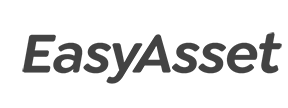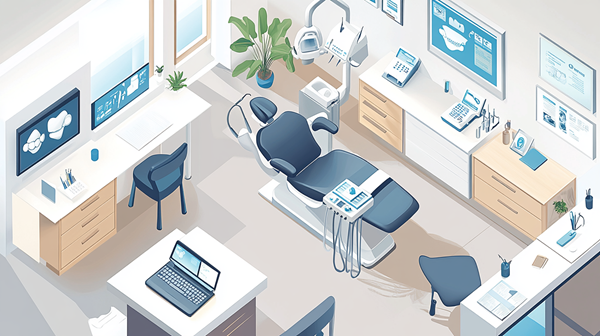Explore dental practice fit-out financing in Australia. Learn about equipment loans, leasing, and budgeting for your practice setup.
Key Takeaways
- Fit-Out Costs: Dental practice fit-outs typically cost $2,000 to $5,000 per square meter, depending on location, design, and materials.
- Equipment Financing: Financing options include equipment loans, leasing, unsecured business loans, and vendor financing.
- Location Impact: Choose the right location to manage fit-out and operational costs, as rent varies widely across Australia.
- Compliance Costs: Budget for $20,000 to $50,000 in compliance-related expenses to meet regulatory standards.
- Financial Planning: Detailed budgeting, expert consultations, and exploring multiple financing options are key to success.
Introduction
Starting or renovating a dental practice is an exciting venture, but it requires careful financial planning. The costs of both the fit-out and equipment can be significant, and securing the right financing is essential for keeping your practice on track. Understanding how to finance both aspects together is crucial for a smooth setup, allowing you to create a modern, efficient practice without straining your finances.
Understanding the Costs
1. Dental Fit-Out Costs
The cost of fitting out your dental practice depends on several factors, including the size of the practice, the location, and the design complexity. Here's an overview of the typical costs:
- Per Square Meter Costs:
- Basic Fit-Out: Around $2,000 to $2,500 per square meter, excluding equipment.
- Superior Fit-Out: Costs range from $3,000 to $5,000 per square meter for a more premium look and feel.
- Total Fit-Out Costs:
- Small Clinic (2-3 treatment rooms): Typically between $100,000 to $150,000.
- Mid-Range Practice (4-5 treatment rooms): Expect to spend between $200,000 to $300,000.
- High-End Practice (6+ treatment rooms): Fit-out costs can exceed $500,000 for large practices.
2. Equipment Costs
Outfitting your dental practice with high-quality equipment is a significant investment. The basic equipment needed includes dental chairs, imaging systems, sterilisation units, surgical instruments, and practice management software. The total cost for a small clinic’s equipment could range from $100,000 to $150,000, with more advanced practices potentially spending upwards of $300,000.
Financing Options for Your Fit-Out and Equipment
Finding the right financing solutions for both your fit-out and equipment is essential for managing your cash flow and achieving long-term success. Here are the most common financing options:
1. Equipment Loans
Equipment loans are a popular option for financing dental equipment. With this type of loan, the equipment itself serves as collateral, which means you can benefit from lower interest rates and fixed repayment terms.
Advantages:
- Ownership of the equipment once the loan is paid off.
- Potential tax benefits for businesses.
- Fixed repayment terms for easier budgeting.
Considerations:
- Collateral may be required.
- Loan costs and interest rates can vary, so it's important to shop around.
2. Equipment Leasing
Leasing allows you to acquire dental equipment without having to pay the full purchase price upfront. This option is ideal for practices that want to preserve capital while still getting the equipment they need.
Advantages:
- Lower initial costs compared to purchasing outright.
- Flexibility to upgrade equipment as technology evolves.
- Maintenance services often included.
Considerations:
- No ownership of the equipment after the lease term.
- Long-term leasing costs can exceed the initial purchase price.
3. Unsecured Business Loans
Unsecured business loans are another option for financing your fit-out and equipment. These loans don’t require collateral, but they may come with higher interest rates.
Advantages:
- Quick access to funds.
- Flexible use of the loan for fit-out, equipment, or other business expenses.
- Fixed repayment schedules to help with cash flow.
Considerations:
- Higher interest rates due to the lack of collateral.
- May require strong business credit for approval.
4. Vendor Financing
Some dental equipment suppliers offer financing options directly. This can streamline the process by allowing you to finance both equipment and the fit-out with a single lender.
Advantages:
- Convenient, as the financing is arranged through the equipment supplier.
- Potentially favorable terms or promotional offers.
- Payments are often aligned with the usage of the equipment.
Considerations:
- It’s essential to compare vendor financing options with other lenders to ensure you get the best deal.
Strategies for Effective Financing
To ensure that your practice’s finances are handled effectively, consider these strategies:
1. Develop a Detailed Budget
A clear and detailed budget is the foundation of successful financing. Outline all anticipated costs, including construction, equipment, furnishings, and compliance expenses. This will help you assess how much you need to borrow and ensure that you have enough capital for the entire process.
2. Consult Financial Experts
Working with accountants or financial advisors who specialise in dental practices can provide valuable insights into the financial options available to you. They can help you navigate the complexities of financing, identify potential pitfalls, and ensure that you're making the right decisions for your practice’s long-term success.
3. Compare Financing Options
Not all financing options are the same. Take the time to compare interest rates, repayment terms, and fees across different lenders. This will ensure that you get the most cost-effective option for your practice.
4. Plan for Future Growth
When selecting financing, consider the future growth of your practice. Look for flexible financing options that will allow you to upgrade equipment or expand your practice in the future without facing significant financial strain.
5. Explore Government Grants
Depending on your location or specific practice focus, you may be eligible for government grants or funding programs. Research available grants that could reduce the financial burden of your fit-out or equipment costs.
Common Challenges and How to Overcome Them
Establishing or renovating a dental practice comes with several challenges, but these hurdles can be overcome with careful planning.
1. Underestimating Costs
Many dental practices underestimate the costs involved in the fit-out and equipment purchase. Ensure that your budget is thorough and includes all aspects of the project, from design and construction to equipment and compliance.
2. Cash Flow Management
Cash flow is a crucial consideration when financing both the fit-out and equipment. Ensure that the financing options you choose align with your practice's cash flow cycle. Look for flexible loan terms or leasing options to help manage monthly payments and avoid financial strain.
3. Navigating Regulatory Compliance
Australia has strict health and safety standards for dental practices. Make sure you allocate enough budget for regulatory compliance, which can add significant costs to your fit-out. Meeting these requirements from the start will save you from costly delays or fines later on.
FAQ Section
- What are the main financing options for a dental practice fit-out?
The main financing options are equipment loans, leasing, unsecured business loans, vendor financing, and business term loans. Each option offers different benefits, so it's important to choose the one that aligns best with your practice’s needs and financial goals.
- How much does a dental fit-out cost in Australia?
The cost of a dental fit-out ranges from $2,000 to $5,000 per square meter depending on the location and design. For a small clinic, you can expect to pay between $100,000 and $150,000, with larger, high-end practices costing upwards of $500,000.
- Can I finance both the fit-out and equipment together?
Yes, many lenders offer financing solutions that allow you to finance both your dental fit-out and equipment together. This can simplify the financing process and help you manage payments more effectively.
- How can I manage cash flow while financing a dental practice?
To manage cash flow effectively, make sure to choose financing options with flexible repayment terms that match your business’s revenue cycle. Explore a combination of loans and leasing to minimise upfront costs and ensure smooth cash flow.
- Are there government grants available for dental practices?
Yes, there are several government grants and funding programs available to dental practices, especially for sustainable practices or those offering services in underserved areas. Research available grants to ease the financial burden of your fit-out and equipment costs.
Conclusion
Financing the fit-out and equipment for your dental practice is a significant undertaking, but with the right planning and financial strategy, it’s a challenge you can overcome. By understanding the costs involved, exploring various financing options, and consulting financial experts, you can ensure your practice is set up for success without overburdening your finances. A well-financed fit-out not only supports the smooth running of your practice but also helps to create a positive experience for your patients, paving the way for long-term growth and success.


